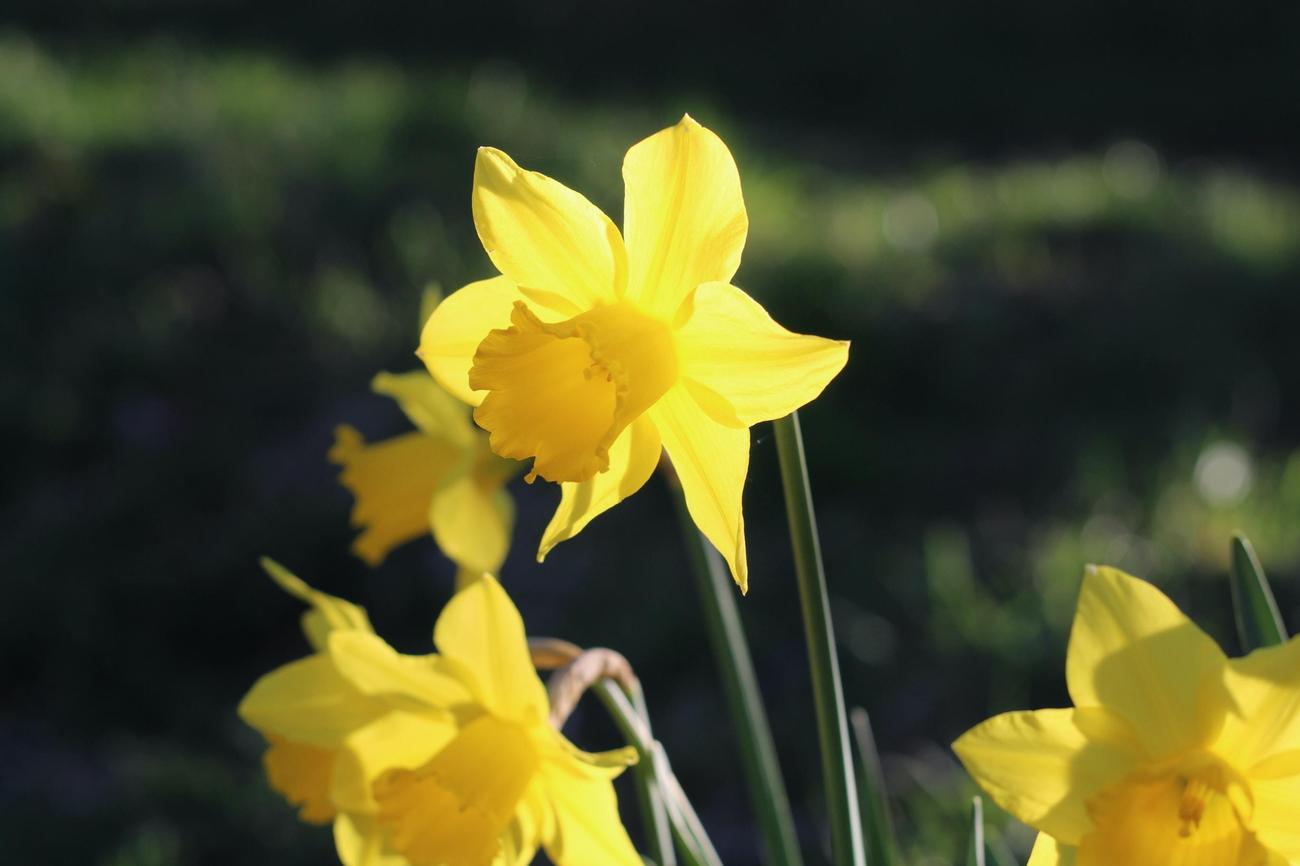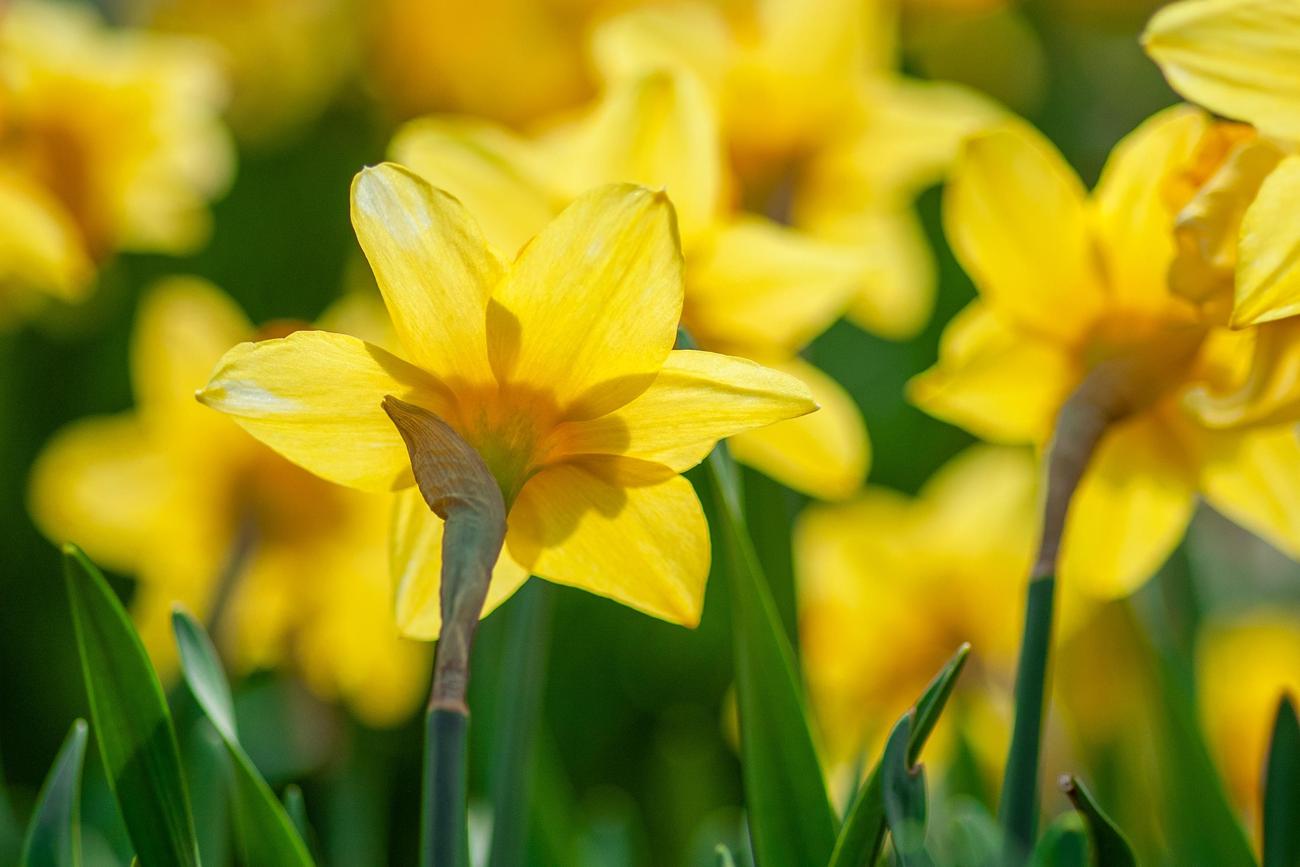Are Daffodils Poisonous? Unveiling the Potential Risks

When it comes to the colorful world of flowers, daffodils have always held a special place in our gardens and bouquets. Their vibrant yellow trumpets and delicate petals bring joy and beauty to any setting. But amidst their undeniable charm, a question often arises: are daffodils poisonous? As a seasoned horticulturist with an extensive background in plant taxonomy and toxicity, I am here to shed light on this intriguing topic.
Daffodils, scientifically known as Narcissus, are indeed captivating plants that grace our landscapes with their early spring blooms. However, it is important to acknowledge that behind their stunning exterior lies a potential hidden danger. While daffodils are not lethal in the same way as deadly nightshade or hemlock, they do contain certain toxic compounds that can pose risks to both humans and animals if ingested in large quantities.
One of the primary toxic constituents found in daffodils is lycorine. This natural alkaloid is primarily concentrated in the bulb and the outer layers of the plant. Ingesting significant amounts of lycorine can lead to a range of unpleasant symptoms, including nausea, vomiting, abdominal pain, diarrhea, and even heart arrhythmias. It is important to note that these symptoms typically occur when daffodil bulbs are consumed, rather than the flowers or leaves. However, caution should still be exercised, especially if you have curious pets or young children who may mistake the bulbs for edible bulbs like onions or garlic.
Furthermore, daffodils also contain other toxic compounds such as narcissin and oxalic acid. These substances, albeit present in smaller quantities, can cause skin irritation and allergic reactions in susceptible individuals. So, while admiring the beauty of daffodils, it is crucial to avoid direct contact with their sap, as it can potentially cause dermatitis or an allergic skin reaction in some people.
Now that we have unveiled the potential risks associated with daffodils, it is important to approach these beloved flowers with caution. While they bring joy and vitality to our outdoor spaces, it is crucial to educate ourselves and others about their toxic properties. By doing so, we can fully appreciate daffodils while ensuring the safety and well-being of ourselves, our loved ones, and our furry friends.
Throughout this article, we will delve deeper into the toxic compounds found in daffodils, explore their potential impacts, and provide practical guidance on how to safely enjoy these stunning blooms. Together, let us arm ourselves with knowledge and appreciation as we navigate the fascinating world of daffodils and their hidden dangers.
Are Daffodils Poisonous?
Daffodils, with their vibrant yellow flowers, are a beloved sight in many gardens and parks. However, beneath their beauty lies a hidden danger. Are daffodils poisonous? The answer is yes. These seemingly harmless flowers contain toxic alkaloids, with lycorine being the most common one. It’s important to understand the potential risks associated with daffodils, especially for humans and animals.
All parts of the daffodil plant, especially the bulb, are toxic. Ingesting daffodils can lead to a range of symptoms, including abdominal pain, nausea, vomiting, diarrhea, and mouth irritation. While daffodil poisoning rarely causes fatalities, it’s essential to recognize the profound physiological effects the alkaloids in these flowers can have on our bodies. As a seasoned horticulturist, I have seen the impact firsthand and can provide valuable insights into this matter.
Daffodils can be particularly dangerous to pets, such as dogs, cats, and horses. These animals may experience symptoms similar to humans when exposed to daffodils, including nausea, vomiting, heart problems, and breathing difficulties. To protect our furry friends, it’s crucial to keep them away from these plants and seek immediate veterinary attention if ingestion occurs.
Sometimes, daffodil bulbs may be mistaken for onions, leading to accidental consumption. Proper labeling and awareness are key in preventing such confusion. Remember that daffodils belong to the Amaryllidaceae family, which includes other toxic plants like amaryllis and various types of lilies. Understanding the potential risks associated with daffodils can help us take necessary precautions to avoid poisoning incidents.
Symptoms of daffodil poisoning range from mild to severe and can include retching, vomiting, diarrhea, light-headedness, sweating, drowsiness, collapse, paralysis, and in extreme cases, even death. The bulbs of daffodils contain the highest concentration of toxins, so extra caution should be exercised when handling them.
It’s critical to be aware of the long-term effects daffodils can have on our health. These flowers can affect the kidneys and potentially lead to chronic kidney disease over time. This emphasizes the significance of preventing exposure to any part of the daffodil plant, especially for individuals with existing kidney conditions.
In summary, daffodils may be vibrant and visually appealing, but they come with hidden dangers. They are toxic to humans, pets, and other animals, posing significant health risks. It is crucial that we understand and respect the potential dangers associated with daffodils to ensure the well-being of ourselves, our loved ones, and our furry companions.
“While daffodils may brighten our landscape, it is imperative that we approach them with caution. Their beauty hides toxic secrets that can have serious consequences.”
Daffodils, those vibrant and cheerful flowers that bloom in spring, have a fascinating history and a whole lot more to offer than just their colorful petals. Did you know that these beautiful flowers are also packed with interesting facts? If you’re curious about fun facts about daffodils, click here to uncover the secrets hiding beneath their delicate exterior: fun facts about daffodils. Prepare to be amazed by the incredible stories that these charming flowers have to tell!
Daffodils: Surprising Culprits of Floral Destruction
[youtube v=”FPflWdsCRdE”]
Daffodils, traditionally known as cheerful symbols of spring, harbor a dark secret: they are cold-blooded killers. Not only are daffodils toxic to humans and pets, but they also unleash their destructive powers on other plants. This intriguing phenomenon, known as the “vase effect,” highlights the potent toxicity of daffodils, having a significant impact on the longevity and vitality of neighboring flowers.
The toxicity of daffodils, specifically the chemical lycorine, poses a threat to both people and pets. However, what many people do not realize is that these vibrant flowers possess the ability to sabotage the lives of their floral companions as well. Placing freshly cut daffodils alongside tulips or roses in the same vase leads to the swift demise of the other flowers. Within a few short days, wilting and yellowing leaves take over, drastically reducing the vase life of the once vibrant blooms.
The malevolent force behind this floral carnage is the toxic sap contained within the stems of daffodils, known as mucilage. Upon cutting, the sap oozes from the daffodil stems, creating a deadly concoction within the vase. When other flowers attempt to draw water through their stems, they inadvertently absorb this toxic sap, sealing their unfortunate fate.
“The daffodils’ stems are brimming with toxic sap called mucilage, which acts as a lethal poison upon contact with other flowers. This deadly exchange in the vase is caused by neighboring flowers essentially sipping up a toxic concoction.”
Each flower species responds differently to the toxicity of daffodils. Roses, for example, succumb to a lethal combination of mucilage and the sugar content present in the water. The sugar becomes a feast for water-dwelling bacteria, leading to the clogging of rose stems. Without a protective microbiome, rose stems suffer, impeding water uptake and resulting in premature demise. In contrast, tulips face the obstruction caused by a toxic alkaloid called narcissicissine, which falls in the same molecular class as caffeine and nicotine. This compound disrupts vital processes such as cell division, protein synthesis, and hormone production, rendering tulips unable to thrive.
Fortunately, florists have found a way to outmaneuver the daffodils’ destructive tendencies. By initially placing daffodils in a separate vase for a few hours, the toxic sap dries out, reducing its lethal impact. Once the water is replaced, most of the harmful substances are washed away. However, one must exercise caution when handling daffodils once dried, as the toxic potential of their parts remains intact.
Interestingly, not all plants regard daffodil mucilage as a nefarious substance. Irises, for instance, actually benefit from cohabitating with daffodils. It seems that the mucilage of daffodils provides irises with an extended lifespan by inhibiting the production of enzymes and proteins associated with aging. This intriguing symbiotic relationship has left researchers wondering if other plant species may also experience benefits from the toxicity of daffodil sap. In fact, Hippocrates, the father of medicine, used narcissus oil, derived from the daffodil plant, as a salve to treat cancer centuries ago. Recent studies have revealed the anti-tumor potential of lycorine, giving rise to further investigation on its use in the management and treatment of cancers.
“As surprising as it may seem, daffodils possess hidden virtues. Their toxic sap can help irises defy aging while offering potential breakthroughs in cancer research.”
In conclusion, daffodils may appear innocent and charming, but their toxic nature extends far beyond their beauty. From the bulb to the bloom, these flowers wield a lethal power that affects not only humans and animals, but even their fellow plant companions. Understanding the intricacies of this botanical phenomenon highlights the often-unseen battles that occur within the floral world. So, next time you encounter a daffodil, admire its beauty, but always approach with caution.
“Daffodils, the unsuspecting villains of the flower kingdom, serve as a reminder that nature’s beauty can often hide unexpected perils. Proceed with awe and vigilance in the presence of these seemingly harmless blooms.”

FAQ
Question 1: Are daffodils toxic to humans?
Answer 1: Yes, daffodils are toxic to humans. All parts of the daffodil plant, especially the bulb, contain toxic alkaloids, with lycorine being the most common one. Ingesting daffodils can lead to symptoms such as abdominal pain, nausea, vomiting, diarrhea, mouth irritation, and even more severe consequences in some cases. Immediate medical attention is advised if daffodil poisoning is suspected.
Question 2: Can daffodils be harmful to animals?
Answer 2: Yes, daffodils can be harmful to animals. The toxic alkaloids in daffodils, particularly lycorine, can cause poisoning in animals such as dogs, cats, and horses. Ingesting daffodils can lead to symptoms like nausea, vomiting, heart problems, breathing difficulties, and potentially more severe consequences. Pet owners should be cautious and prevent their animals from consuming any part of the daffodil plant.
Question 3: What are the symptoms of daffodil poisoning?
Answer 3: The symptoms of daffodil poisoning can vary but may include abdominal pain, nausea, vomiting, diarrhea, mouth irritation, light-headedness, sweating, drowsiness, collapse, paralysis, and even death. It is important to seek medical attention immediately if these symptoms occur, especially in severe cases or when ingestion of daffodils is suspected.
Question 4: Are daffodils fatal if ingested?
Answer 4: While daffodils are poisonous, fatalities from daffodil poisoning are rare. However, it is still essential to take daffodil poisoning seriously, as ingestion of daffodils can cause severe symptoms and potential complications, especially in young children or pets. Prompt medical evaluation is crucial in suspected cases of daffodil ingestion.
Question 5: What precautions should be taken to avoid daffodil poisoning?
Answer 5: To avoid daffodil poisoning, it is important to take certain precautions. These include:
– Educating oneself and others about the toxic nature of daffodils and their potential risks.
– Ensuring proper labeling of daffodil bulbs to prevent confusion with edible bulbs like onions.
– Keeping daffodils out of the reach of children and pets.
– Promptly seeking medical assistance if daffodil poisoning is suspected.
– Consulting with a horticulturist or plant expert before planting daffodils in areas frequented by animals.
- Sept 31 Myth: Unveiling Calendar Secrets - March 18, 2025
- How Long & Till December 18, 2025: Accurate Countdown Guide - March 18, 2025
- Discover Japanese Artists: A Complete History - March 18, 2025
















